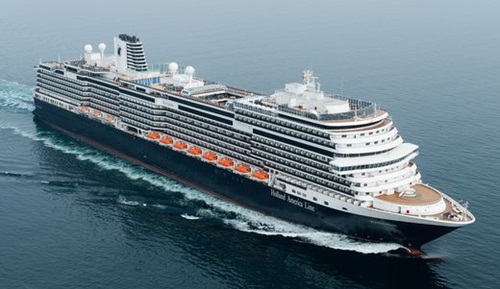The government will give Rs500 crore to Shipping Corporation of India (SCI) for leasing out cruise vessels to promote cruise tourism, as part of its efforts to promote coastal shipping.
Union minister for shipping, road transport and highways, water resources, river development and Ganga rejuvenation Nitin Gadkari stated this at a function organised as part of the Jawaharlal Nehru Port Trust’s (JNPT) annual awards event.
Union minister of state for tourism K J Alphons also interacted with associates of travel and trade fraternity on various issues concerned with cruise and other tour and travel related matters.
Addressing the gathering, Gadkari said the government of India is focusing on sea route and inland waterways, with a view to promoting domestic tourist destinations. He suggested building jetties along the coastal belt of Maharashtra.
Gadkari said under Sagarmala the government is promoting use of methanol and ethanol fuels to be used in cruise so as to bring down fuel cost. He also suggested that cruise tourist companies bring cruises from abroad and refurbish them in India, noting that this will be cost-effective for them. He said the government is ready to co-operate with the industry and work on innovative ideas.
Tourism minister K J Alphons said the government is looking at doubling foreign tourist arrivals in three years. The minister suggested exemption from GST for first five years to boost cruise tourism business. The government, he said, may lose money initially, but it will give handsome profit going ahead.
Citing the various steps taken by the government to promote cruise tourism such as upgradation of cruise terminals and enabling freer flow of passengers, the minister said that the ministry of tourism has invested Rs100 crore for cruise terminals in various parts of the country.
The government has identified development of cruise tourism as a thrust area and has set up a task force under the secretary (shipping) and secretary (tourism). It has also engaged consultants Bermelo & Ajamil and Ernst and Young to prepare a roadmap and an action plan for development of cruise tourism in India.
As per the report of the consultants, there is tremendous growth potential in this sector. The number of cruise passengers visiting India is expected to rise from 2 lakh at present to 4 million in the coming 25 years. Almost 80 per cent of this, ie 3.2 million, are expected to take cruises from Mumbai Port and 70 per cent of the projected passengers are likely to be Indian citizens.
The number of cruise ships arriving in India has increased by 24 per cent while the number of cruise passengers has increased by 52 per cent in the last two years. An International Cruise ship was home-ported in Mumbai Port in year 2016-‘17 with 7 voyages from Mumbai Port. This year the home-porting ship is expected to do 9 voyages in the coming cruise season 2017-18, according to the shipping minister.
The port authorities have now finalised the standard operating procedures, customs, immigration, security, CISF, state government, ship agents, tour operators, etc to make cruise experience better. With clarity in rules and uniformity in procedures, cruise ships and passengers are assured of proper services, the release added.
To enable foreign cruise ships to operate domestic cruises, the government has relaxed the cabotage restrictions for 10 years.
Mumbai Port, which is going to be the hub for more cruises, is developing a new cruise terminal of about 40,000 sq.m, with all passenger amenities including retail, hotel, and separate departure/arrival in place of present terminal which is only about 3,000 sq m.
To make competitive and reasonable tariff, all ports will have a uniform tariff comparable to the European ports, which will give much relief against the current tariff.
Similarly, e-visa and e-landing cards have been introduced to provide quick and faster clearance from the ports.
Customs processes have been greatly simplified and there is hardly any custom interface with passengers.
Security as per ISPS processes have been introduced and passenger clearance takes place very quickly. Further, ease of doing business is facilitated by RFID and access control system — more technology is utilised for security purposes, reducing the manual processes that sometimes irritate passengers.













